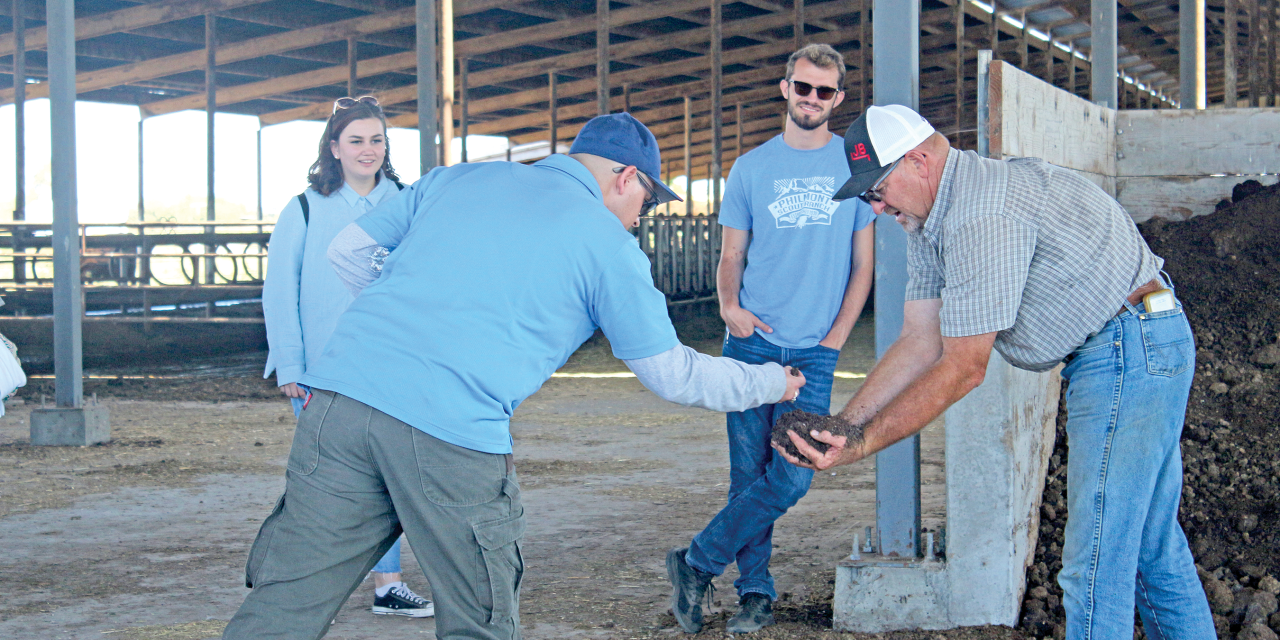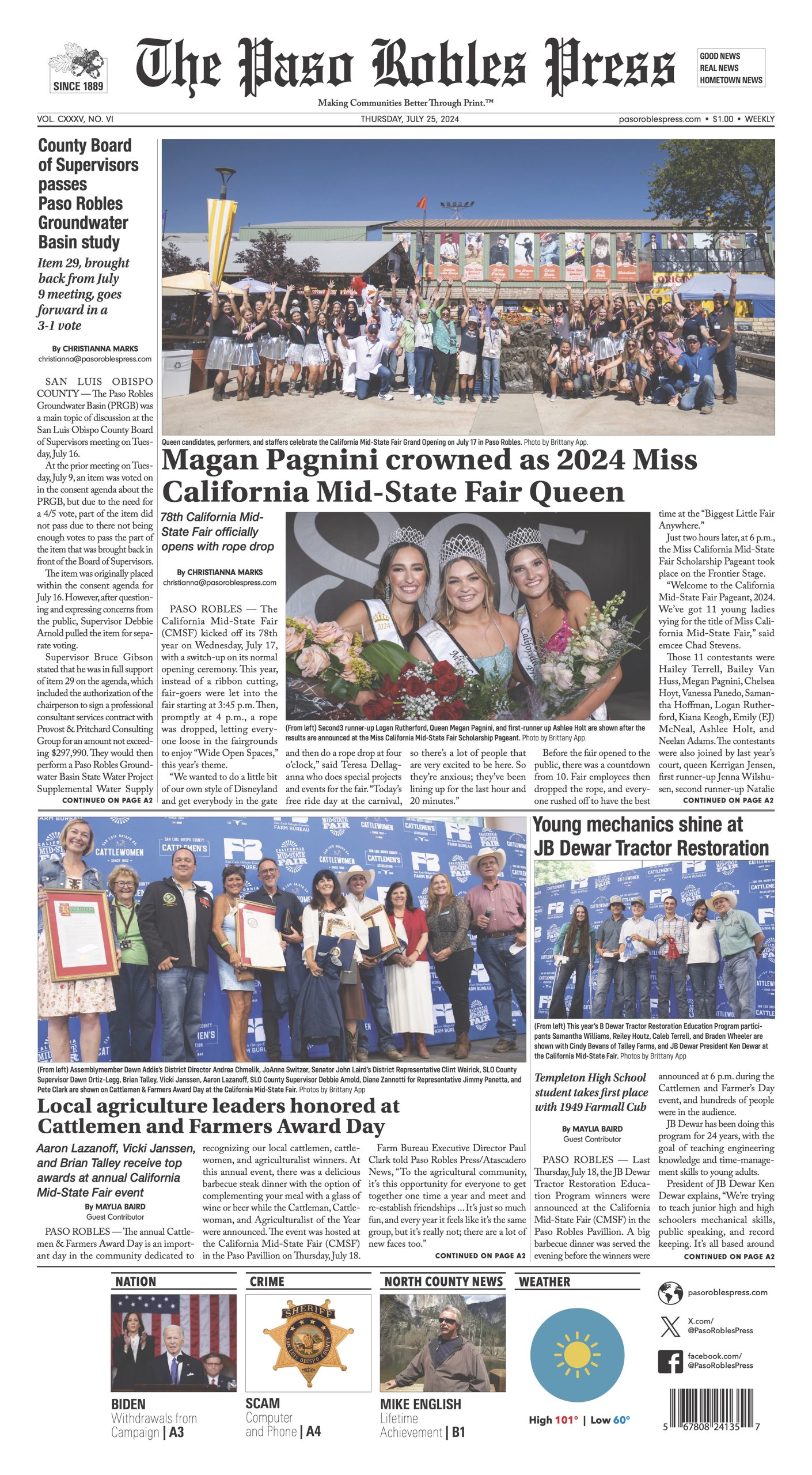Cattle operation uses grazing to reduce fire dangers; organic dairy uses composting to conserve water
By Ching Lee
California Farm Bureau Federation
CALIFORNIA — In a region dominated by vineyards, those who raise cattle for beef or milk production have looked to innovations and solutions outside the box to help keep their businesses viable.
A Napa County cattle operation and a Sonoma County organic dairy shared how they do just that while also helping to preserve the land and natural resources around them.
They offered an on-the-ground glimpse of their operations last week as part of an educational tour hosted by the California Farm Bureau and California Bountiful Foundation, with funding from the California Cattle Council. Tour participants included state legislative and committee staffers.
“These educational tours of cattle and dairy operations are critical in showing how our farmers and ranchers are contributing to food security, the local economy and its communities,” said Amrith Gunasekara, director of science and research at the California Farm Bureau.
“The tours further highlight how farmers and ranchers help take care of the land and environment. We need to tell their story more so their voice can be heard.”
At Gamble Family Farm in Napa County, cattle graze the property’s nearby pastures and hillsides to reduce fire dangers on land that otherwise could turn into a tinderbox as grasses dry.
With the region’s catastrophic wildfires in recent years, “The concern has been managing our fuel loads,” said sixth-generation farmer Johnnie White, owner of the cattle. He and his wife, Kendall, started the cattle operation in 2021.
The Gamble family decided to fence off the hill so the land could be grazed to protect not just the family’s vineyard but also two houses on the property and two nearby wineries, White said. He leases the land, running about 11 head of cattle around the vineyard year-round.
White sells beef directly to a restaurant and chef in St. Helena. His beef is also featured in local farm-to-table dinners that sell for $375 a ticket.
“That kind of shows you the desire for people to get back to where their food comes from,” White said.
His cattle are mostly Angus crossed with shorthorn, Charolais and, more recently, Akaushi, a type of Wagyu breed known for its marbling.
“We’re going for that ultra-premium product,” he said.
Because Akaushi cattle are slow growing and take longer to raise, White crosses them with Angus to get “hybrid vigor,” producing meat qualities of Wagyu but with the growth of Angus. He uses shorthorn bulls in the mix as they are a “little heartier of an animal” and does “a good job of grazing and utilization of the forage,” he said.
He then finishes the cattle on grain, some of which is brewer’s grain — a byproduct of making beer — from Mad Fritz, a brewery and malthouse in St. Helena.
As a vineyard manager who also operates a custom farming business removing vineyards, White said he works with clients whose land will be out of production for a year and uses their properties to grow hay crops.
“It’s a very cheap source of feed for us,” he said. “But it’s also pretty sustainable because we’re using this fallow piece of ground, getting a crop off of it to make a nutritious protein source.”
Launce Gamble, whose grandfather acquired the ranch in the 1950s, said fencing the property so that it could be grazed by White’s cattle is less costly than renting sheep and goats annually for the same service. With permanent fencing, the cattle can graze the land year-round, he said.
Gamble said state and federal lands also could benefit from a “well-intentioned and managed grazing program.” When done properly, he said, grazing can benefit the earth by increasing carbon sequestration, water retention and biodiversity.
In Sonoma County, an organic dairy run by the Beretta family earned the 2022 Leopold Conservation Award, which recognizes farmers and ranchers who employ sustainable practices to maintain natural resources. The dairy has been certified organic since 2006 and milks about 300 cows.
To reduce the farm’s methane emissions, the family added a system that automatically scrapes up the cow’s manure and separates the liquid from the solids, which are then composted. The compost is used in the barn for cow bedding and applied to pastures to improve the soil, dairy farmer Doug Beretta said.
Using the compost for animal bedding has been “a big savings,” he said, because the dairy no longer purchases beach or river sand, which costs about $700 a truck-and-trailer load.
During the summer, with the cows being on pasture, the dairy used to go through about two loads a month. In the winter, the loads increased to five or six loads a month. Beretta said he’s also noticed an increase in cow comfort and cleanliness with the compost bedding.
The $600,000 system, installed with help from a grant through the California Department of Food and Agriculture, has also made handling the manure easier without the need of an excavator, Beretta said. Instead of scraping all the manure into a pond, the liquid is separated and applied to fields as fertilizer.
“We were hauling wet, sloppy loads,” he said. “Now about 70 percent of all the manure is being reused. We haul more liquid loads than normal, but we’re getting a lot better benefit out of that liquid, and it’s not quite as thick.”
The farm has also reduced its labor and use of diesel fuel from trucks that haul the manure, Beretta said. The number of loads has been cut in half because they’re not having to haul the solids, he noted.
Being able to use the leftover manure liquid in the field has allowed the dairy to save on irrigation water, said Jennifer Beretta, Doug’s daughter. The farm already partners with the city of Santa Rosa to use its reclaimed wastewater for irrigation to grow feed crops. Using the treated wastewater means the farm doesn’t have to pull about 80 million gallons of groundwater from the aquifer, she said.
“We’ve been one of the biggest, in my eyes, water savers for the last 40 years by utilizing that (reclaimed) water,” Doug Beretta said.
Now, with the addition of the recycled manure water, the farm can grow a second and third cutting of silage crop without using the city water, Jennifer Beretta said.
“This project benefited us not only by having less thickness of manure, but we were able to push that water into our irrigation set and still continue to grow crops even through drought,” she said. “That was beneficial for us.”
Feature Image: Sonoma County dairy farmer Doug Beretta, right, shows visitors to his farm compost used as animal bedding and soil amendment. The product is made using an automatic scraping system that manages the dairy’s cow manure by separating the liquid from the solids, which are then composted.
Photo/Ching Lee













